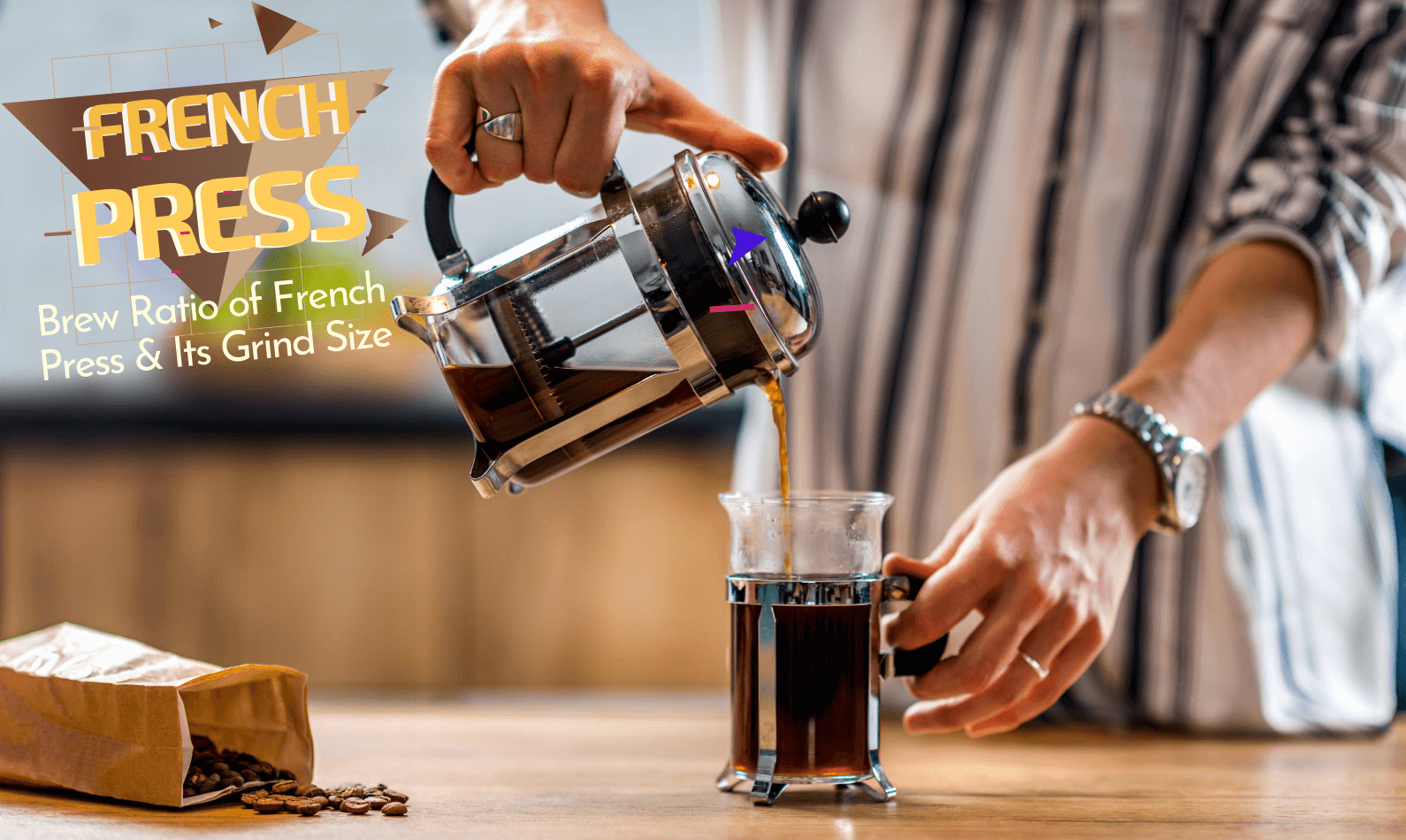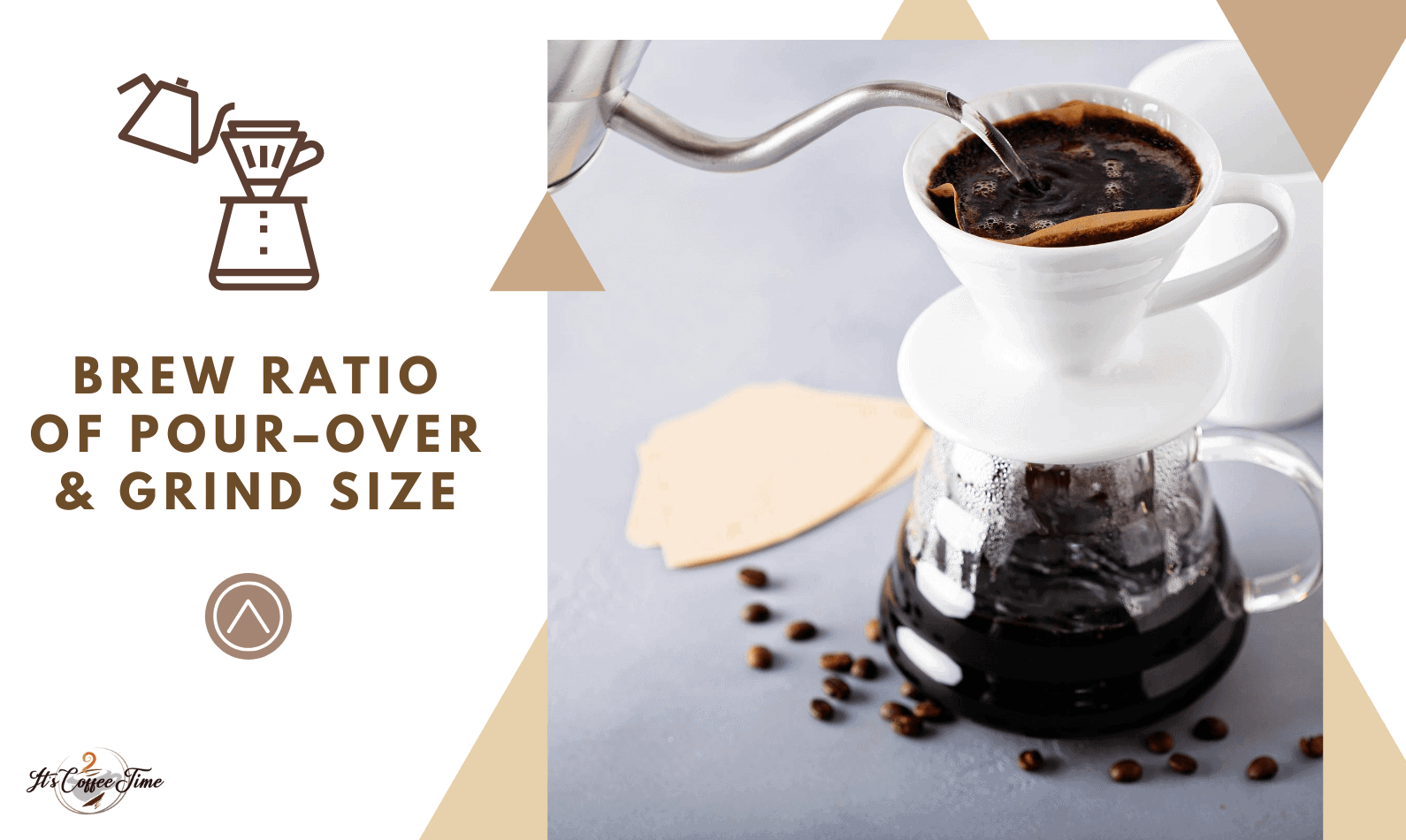French Press Vs Pour-Over Explanation of The Best Brewing Methods: You’re sitting at home and worrying about how to spend your time? Why not become a Barista at home? Staying at home during the pandemic has given many a chance to hone their home-brewing abilities. So we decided to help you by breaking down the differences between two popular ways of brewing at home – the method of immersion with a French Press and the method of pour-over.
We will explore how different these methods are in terms of flavor, grind, and brew ratio. What’s more, we’ll present a recipe for each process and give you some additional tips and tricks to make your brew perfect. Get ready, then!
French Press Vs Pour Over (The Main Difference)
Let’s start by recognizing the main difference between the method of immersion and the method of pour-over. It’s literally about the way the hot water touches the brewer’s coffee grounds. As its name suggests, the immersion method occurs when the hot water immerses the coffee grounds that are fully covered. The coffee grounds are then left to steep, so the coffee is removed from the hot water. That is one of the earliest methods of brewing, dating back to the 19th century. One of the most common methods of brewing using immersion is with the French Press.
A more modern way of brewing coffee at home is the pour-over method. Unlike the immersion method, while using a timer, the hot water is slowly poured over the coffee grounds in various stages. This system exercises greater control over the brew, and many favor it for its precision. Your cup of coffee will be transparent and vivid while at the same time maximizing the flavors of the coffee beans while brewing with a pour-over system. That’s different when using the immersion process, which results in a heavy cup with more body and probably more sediment.
Difference Between the Equipment (French Press Vs Pour Over)
These techniques are commonly used worldwide, and there are several brewers on the market that you can use to implement them. French Press, Aeropress, and Clever Dripper are the most popular immersion method brewers. French Press is the oldest of the three and the most popular. Many households love it reliably and love it, so we’ve prepared a recipe for you to make at home. The V60, the Chemex, and the Kalita Wave are currently the most popular pour-over market methods. We will give you a V60 recipe to contrast it with the French Press.
Size of Grind and Brew Ratio
The two main variables that you need to be aware of when brewing coffee at home are the size of the grind and the brew ratio. All of these factors will influence the final result, and paying attention to them will help you brew a delicious cup of coffee.
Brew Ratio of French Press and Its Grind Size

The brew ratio will vary depending on which size of French Press you own. The 3-cup French Press is one of the most popular sizes, with a ratio of 1:16. That means 27g of coffee and 430ml of water is needed. It’s time to grind them until you learn how many grams of coffee beans you need to use. When you brew with a French Press, we advise you to grind the beans using a coarse grind setting.
As we described above, the French Press is a form of immersion brewing, which means that hot water must cover surfaces, which will be steep inside it. By grinding coarsely, you slow down the extraction process by giving a flat shape to the grounds. If you choose a medium-fine grind system, you can over-extract the coffee to give your cup a tangy and bitter flavor profile.
Brew Ratio of Pour – Over and Grind Size

Like the French press, the brewer ratio for any pour-over process varies depending on the brewer you use (V60, Kalita Wave, Chemex, etc.), the brewer’s size, and the number of cups you want to make. The more cups you want to make, the more coffee you need, the longer the brew time. Let’s say you would like to make a 1-cup V60 for the sake of this comparison. We recommend that you use a brew ratio of 1:18 that is 14 g of coffee beans and 250ml of tea.
Read more about How to Clean Your Ninja Coffee Bar? Easy Techniques to Learn
Concerning the grind setting for pour-over methods, you have an opportunity to experiment. Whether you’re using a V60, a Kalita Wave, or a Chemex, a different cup of coffee will result from the way you grind your coffee beans. If you grind the beans fine, it will be difficult for the water to pass through the coffee grounds, resulting in a heavy, full-bodied flavor. If you grind coarse, the water will move faster through the coffee bed, and the taste of your cup will be clean and light.
Tips and Tricks to Follow Before Starting Brewing
-
Brewing with a French Press
You will need French Press, size, 27 g of whole coffee beans, a timer, a coffee grinder, 430 ml of filtered water plus additional to preheat your cups and spoon or stirrer, for three cups.
- Instructions
The Beans are ground using a coarse grind setting. Use some of the hot water to preheat, pour out the French Press, and add the coffee grounds in. Gently shake the French Press even out to the grounds. Place the French Press on your scales, start the timer and start pouring out half the hot water. Once half a minute has gone by, break with a stirrer, or spoon the coffee grounds’ crust.
Pour in the remaining hot water and place the lid on the French Press without ever plunging. Let the coffee grounds steep for 4 minutes, then immediately plunge and serve your coffee. Seek not to let the French Press coffee sit in for a long time. This will lead to a bitter flavor and extraction over. If you don’t want to drink it straight away, pour it into another preheated vessel, separating the grounds from the brew.
-
Brewing with a Pour Over V60
You will need a V60, filters, coffee scale, 14g of whole coffee beans, a timer, a coffee grinder, 250 ml of filtered water, plus extra to preheat your cup and spoon or stirrer for one cup.
- Instructions
Grind the beans using your preferred grind setting; for a clean cup, we suggest medium-coarse. Place the V60 on top of your mug and attach the V60 filter. This way, it will preheat the brewer, the filter, and mug simultaneously when you add some hot water. Pour the hot water out into your mug and add the V60 coffee grounds. Put the V60 back on the scales on your mug and your mug.
Start the timer, and continue to pour. Add the volume of water to the coffee double for the first pour. This is called the blooming step. Let it bloom for about 30 seconds, and continue to pour until in 2:30 minutes you reach 250ml. If you find that any grounds are not in contact with the water, you can stir whenever you feel it’s appropriate. Remove the scales from your mug and the V60 and enjoy the coffee.
-
Maintenance
While most pour-over methods are easy to clean, the French Press needs a little extra effort. The coffee grounds occasionally get stuck in the metal filter. If you’re not going to wash it the next time you’re brewing it carefully, your coffee might end up not being tasting as fresh. Fortunately, removing the filter is simple, and cleaning it separately. You may even want to try to use your French Press for various purposes, such as frothing milk, boiling tea, or even making cocktails. Again, after each use, it is essential to ensure it is properly cleaned.
Conclusion
We hope today’s article has helped you understand how to use a French Press and methods for pour-over. You’ve already found yourself that you can play with a few variables during the brewing. Whatever you choose to do, remember there is no one way to brew coffee. With different brewing methods, different coffee beans, ratios, grind sizes, etc., you can play around. You might find that some methods of brewing are more likable than others. What’s crucial is that you have plenty of opportunities to enjoy a cup of coffee and figure out whether your favorite can be fun.



